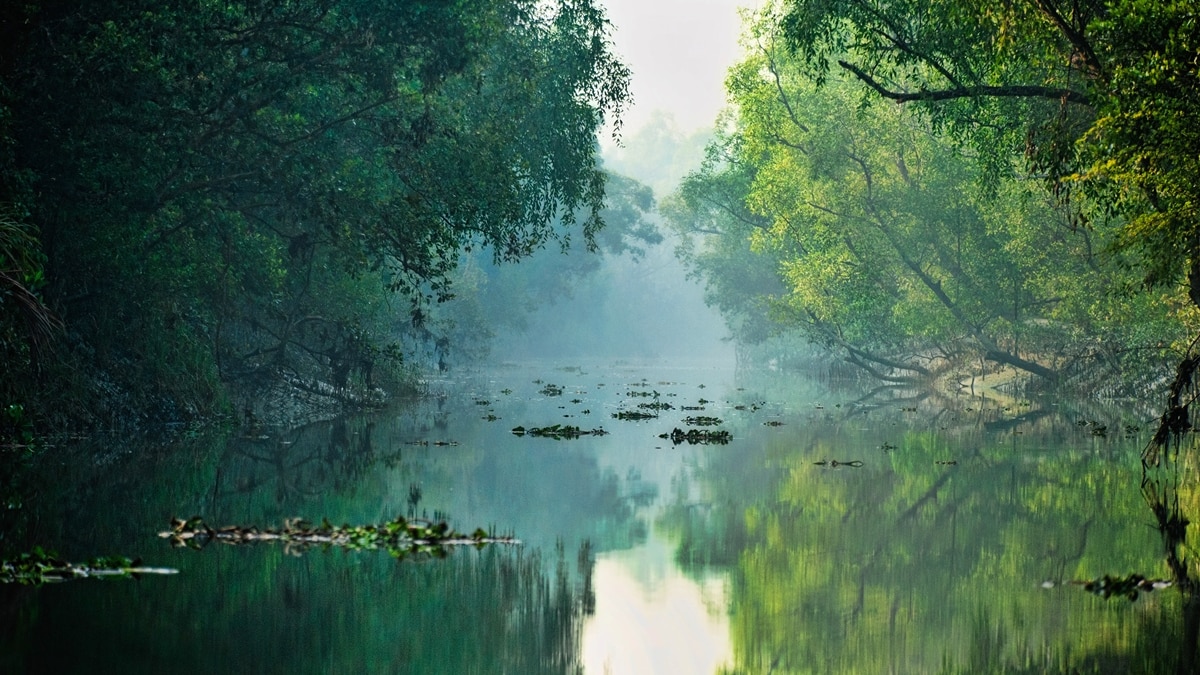
World Mangrove Day: Survival of mangroves can secure coastal future
Mangroves, thriving in saline coastal habitats of the tropics and subtropics, are robust sentinels against sea-level rise and coastal erosion.

In Short
- Mangroves are being adopted as a nature-based solution
- The benefits of mangroves extend far beyond physical protection
- Mangroves also support the livelihoods of coastal communities
By Tejashree Joshi: Climate change and escalating extreme weather have brought a great deal of damage to coastal regions across the world.
The World Meteorological Organisation has estimated that over 3,600 disasters have struck Asia, leading to the tragic loss of 9,84,263 lives and causing economic damages amounting to $1.4 trillion. A substantial part of these costs can be attributed to the devastating effects of cyclones.
Growing evidence points to the increasing frequency and intensity of such cyclonic events and storm surges due to rising temperatures. An example close to home is the Arabian Sea which witnessed a 52% increase in the frequency of cyclonic storms between 2001 – 2019.
In the face of these escalating trends, the importance of conserving mangroves can't be emphasised enough. These vital ecosystems are critical in protecting communities from cyclones and storm surges. Therefore, their conservation plays a significant role in ensuring the survival of coastal habitations.
Mangroves, thriving in saline coastal habitats of the tropics and subtropics, are robust sentinels against sea-level rise and coastal erosion. From an adaptation perspective, mangroves serve as the first line of defence against the rising impacts of climate change for coastal communities.
Their intricate network of roots provides natural barriers against storm surges, waves, and tidal actions, significantly reducing the risk of erosion, flooding, and property damage during extreme weather events. They also help to stabilize coastlines and create land by trapping sediments washed down from rivers or eroded from beaches.
Also Read | Climate change: Which countries will foot the bill?
Moreover, mangroves are blue carbon sinks. They can store up to four times more carbon per unit area than terrestrial forests, locking it away in their biomass and the sediment below.3 This function makes them a key player in mitigating climate change by reducing the amount of carbon dioxide which contributes to the greenhouse effect and increasing global temperatures.
Today, mangroves are being adopted as a nature-based solution to fortify communities against extreme weather. Vietnam has emerged as a successful example of the impact of mangrove reforestation. Vietnam's Mekong Delta, a significant global rice source, is increasingly vulnerable to extreme weather due to its extensive coastline. Floods and storms can make the area unusable for years, affecting the livelihoods of 17 million residents.
Also Read | Climate change solely responsible for July's deadly heatwaves, extreme events
In response, the Deutsche Gesellschaft f¼r Internationale Zusammenarbeit (GIZ) GmbH and Vietnam's Ministry of Agriculture and Rural Development, supported by the German Federal Ministry for Economic Cooperation and Development (BMZ), are restoring mangrove forests. Despite near-extinction in Vietnam due to usage as firewood or for sale, over 600 hectares of mangroves were restored in just four years, successfully pushing the coastline up to 180 meters seaward, thereby increasing land resilience against storms and floods.4
The benefits of mangroves extend far beyond physical protection and carbon storage. They are biological hotspots, supporting an array of species, many of which are endangered and rely on these ecosystems for survival. The loss of mangroves would therefore not only exacerbate climate change but also cause significant biodiversity loss.
Mangroves also support the livelihoods of coastal communities. They provide numerous ecosystem services, including fisheries and timber, which sustain local economies. By acting as nursery grounds for numerous species of fish and shellfish, mangroves play an integral role in the food security of these communities.
Also Read | World's biggest permafrost crater has a warning for Earth
Securing the future of mangrove ecosystems involves concerted efforts addressing various aspects. Enhanced scientific research, including the use of remote sensing technologies, allows for effective monitoring of mangrove health and informs comprehensive conservation strategies.
Additionally, advancing education and awareness about the essential role of mangroves in both local economies and global environmental health is essential. It is also crucial to engage local communities as they often serve as the best custodians of their natural resources. Therefore, measures to conserve mangroves cannot be undertaken without active participation from communities.
Considering their significant benefits, it's imperative to prioritize mangrove conservation and restoration in global and national climate strategies. Mangroves are an affordable, nature-based solution to both climate adaptation and mitigation. In the midst of an intensifying climate crisis, it is time that we acknowledge the role of these vital ecosystems in ensuring our survival.
(The article has been written by Tejashree Joshi, Head, Environmental Sustainability, Godrej & Boyce. The view expressed are of the writer)

